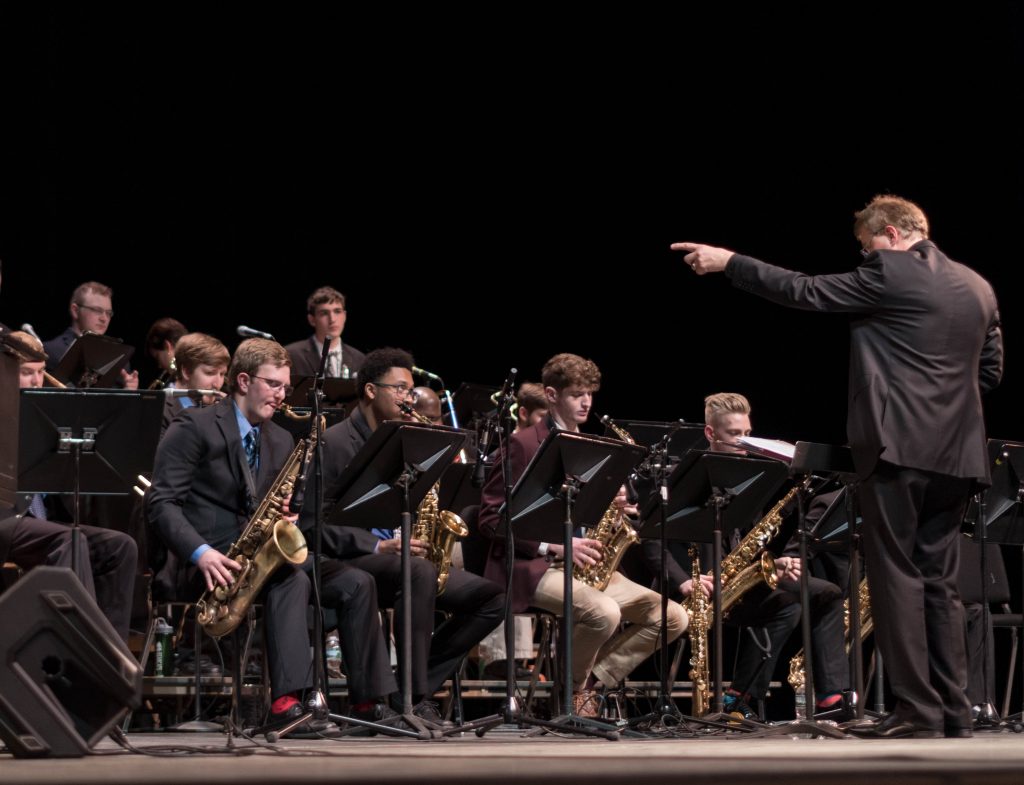
From “The Great Gatsby” to “La La Land,” jazz is making a comeback on the big screen. But it’s growing on campus too, according to Michael Carbone, a lecturer of music at Binghamton University and director of the Harpur Jazz Ensemble.
Carbone attributed this renewed interest in jazz to similarities between jazz — bebop jazz in particular — and genres that many millennials are listening to, like hip-hop or pop music. He explained that when bebop, an early subgenre of jazz, arose in the 1940s, it was because musicians and others in the culture were stepping away from mainstream culture and creating something that was new and rhythmically complex. To Carbone, this is both musically and culturally parallel to when other originally African American genres, such as hip-hop, arose and were then popularized.
“There’s a resurgence of interest in jazz among young people in its history,” Carbone said. “There’s a direct correlation to what they’re listening to, to what came before.”
Modern music often features jazz fused with other styles. Kendrick Lamar’s 2015 album “To Pimp A Butterfly,” for example, had jazz artists and bands creating the instrumentals.
Carbone also sees similarities in the history of jazz and the continuing history of hip-hop. Both genres originated in poor African American communities, acting as inherently black art forms that those marginalizing African Americans could not claim as their own. Despite this, he says that they have both been adapted by mainstream, and mostly white, U.S. culture.
According to Carbone, the resurgence of jazz is occurring among youths, but it’s not being perpetuated by the music industry. He says that on a corporate and commercial level, the industry is still dominated by pop and other genres.
“Jazz music is overshadowed by the glitz [and] glamour of R&B, pop [and] soul music,” Carbone said. “Rarely do you see a jazz musician given any airtime.”
Because of this, Carbone believes the growing interest in jazz is showing itself in different ways, perhaps influenced by its rising place in pop culture through mediums such as movies like “La La Land.” Among his students, Carbone has noticed a growing interest in jazz improvisation courses, especially in those wanting to learn how to improvise on the guitar. Carbone sees improvisation as a tool for expression.
“Improvisation in jazz was a way for people to establish themselves as an individual,” Carbone said.
The interest in jazz specifically on campus and around the Binghamton area is also shown by the jazz nights and jam sessions at venues and restaurants in the area, many of which are attended by BU students. The Lost Dog Cafe in Downtown Binghamton holds jazz jam sessions twice a month, as does the Schorr Family Firehouse Stage in Johnson City.
On Thursday night, the Harpur Jazz Ensemble, directed by Carbone, brought big band jazz to the Anderson Center’s Osterhout Concert Theater for their semester concert. Joining them was acclaimed trombonist John Yao, who arranged all the pieces played during the second half of the concert. This concert was part of several events in which Yao was featured, all in service of encouraging jazz performance on campus. Yao also performed in a free Mid-Day Concert on Thursday afternoon followed by a jazz clinic, and he held a composers’ master class on Wednesday.
To Carbone, jazz is a genre that should be embedded in U.S. mainstream culture, as it is one of the first American-made music genres. Musicians ranging from Frank Sinatra to Lady Gaga have explored and expanded jazz music. Its importance in the African American community lies in foreign and domestic roots, as it borrowed from Caribbean and African music while also laying foundations for soul music and hip hop.
“It’s America’s music,” Carbone said. “Blues and jazz is something that was created here.”


